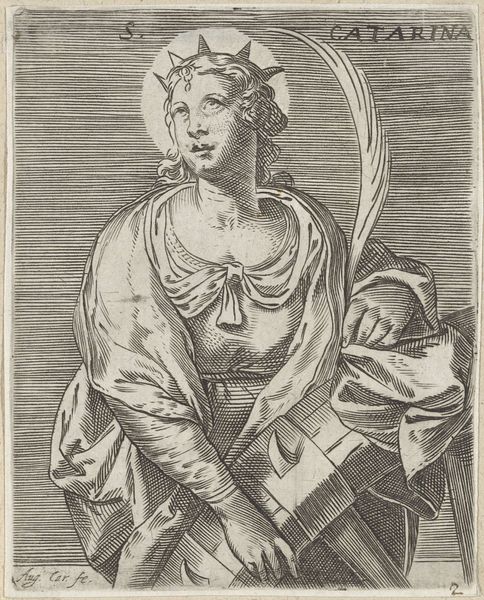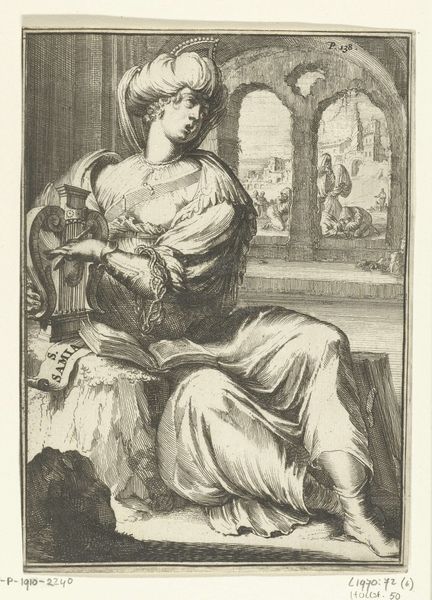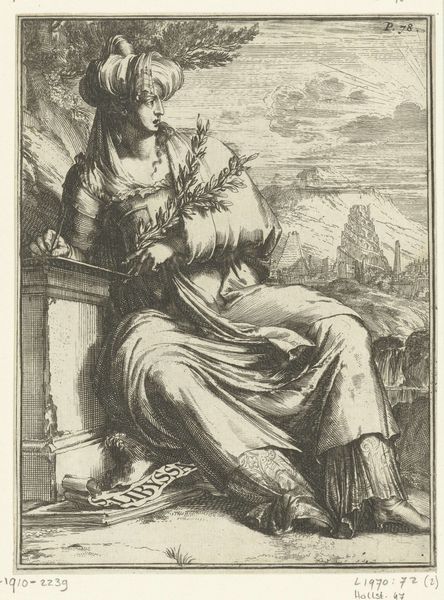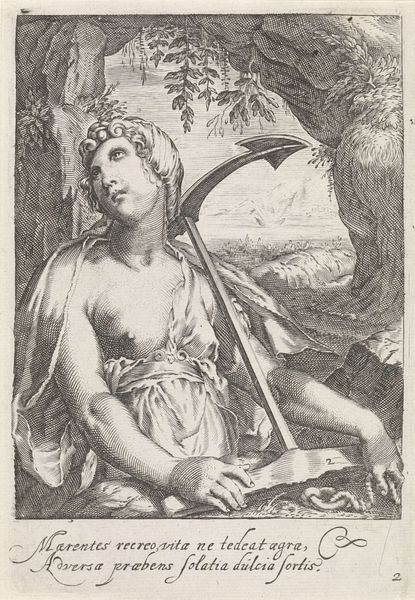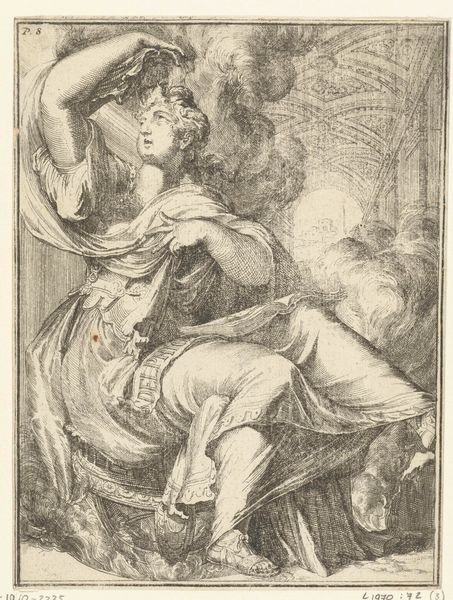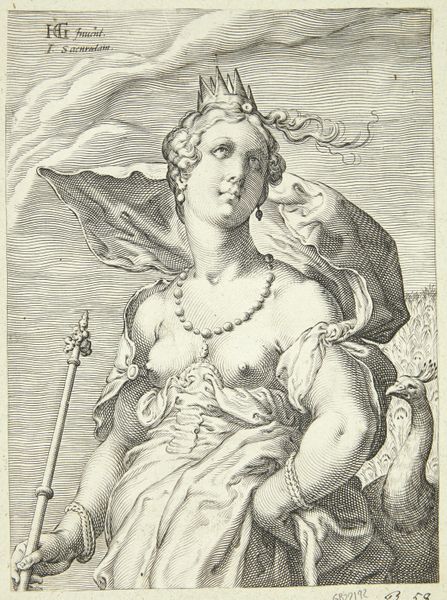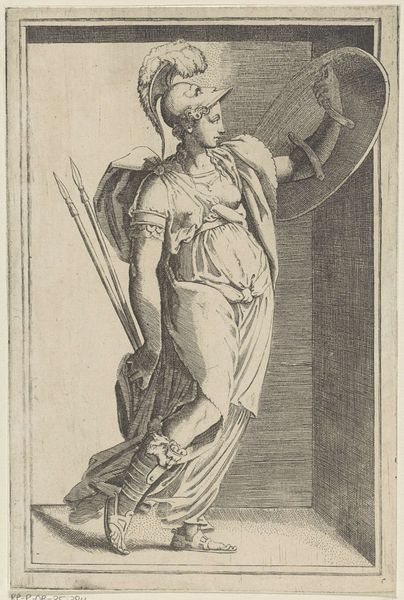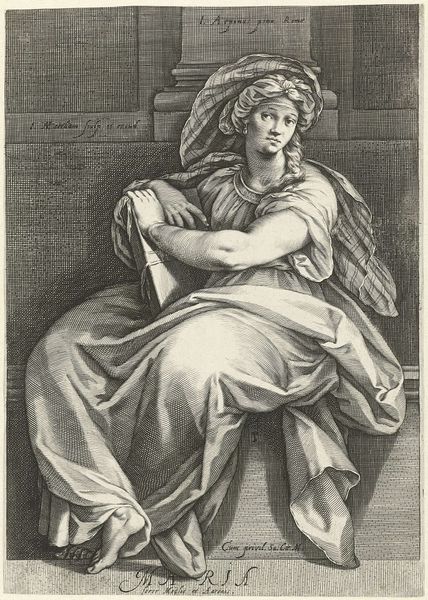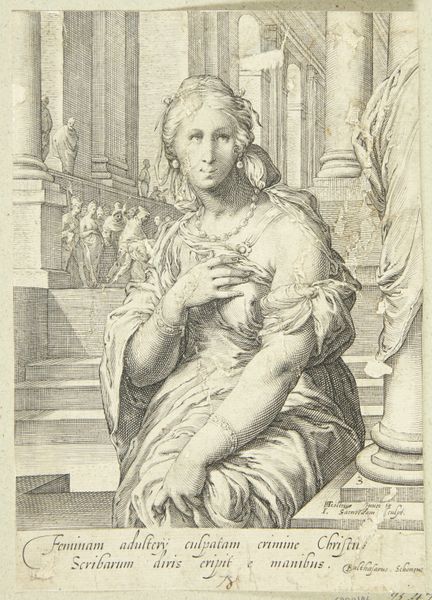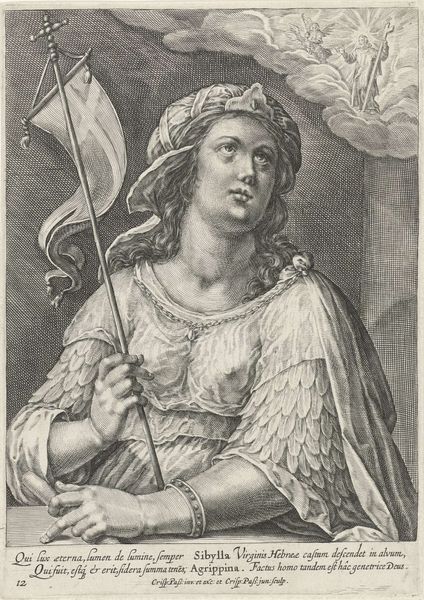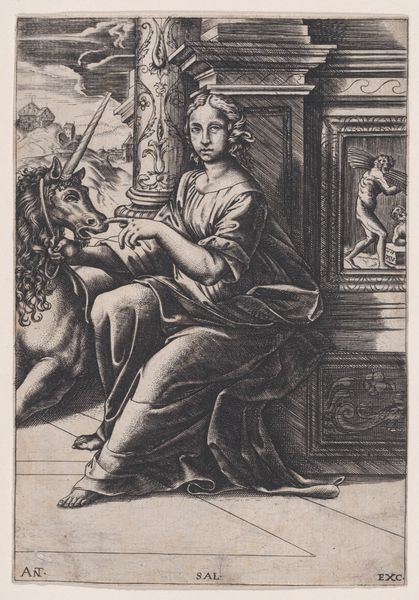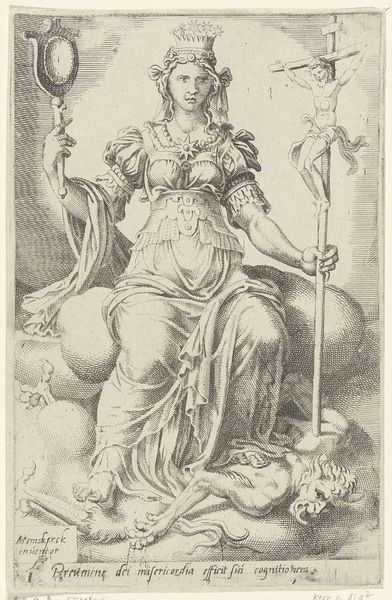
print, engraving
#
allegory
#
baroque
# print
#
old engraving style
#
figuration
#
form
#
history-painting
#
nude
#
engraving
Dimensions: height 149 mm, width 103 mm
Copyright: Rijks Museum: Open Domain
Editor: This is "Kracht (Fortitudo)", a print from between 1601 and 1652. It's anonymous, but it's at the Rijksmuseum. The figure carrying that broken pillar is compelling! What can you tell me about this piece? Curator: Consider the materials – engraving. A reproductive medium, disseminating images widely. The "artist," or perhaps we should say craftsperson, translates an idea of "Fortitude" into a tangible, reproducible commodity. What social function did such images serve? Editor: Well, you see allegorical figures frequently; were these types of prints sort of instructional? For those who saw them in homes and such? Curator: Precisely! Consider the labor involved. The engraver meticulously translating artistic concept to a series of etched lines on a copper plate. The print becomes a form of currency. The pillar she bears – that broken element isn't merely symbolic, it’s material; it speaks to the labor of quarrying, carving, and construction, disrupted. How does that alteration change the original context? Editor: So, it shows the concept of strength altered, perhaps from being one of raw building might into, one that survives difficulty? Curator: What would happen if instead of depicting a partially nude woman it were a farmer instead? That is where you would find where value judgements in materials begin. The printing plate itself held value to be erased and reused or maintained. In thinking of an "artist" and then looking at an engraver you find the means to democratize art. Editor: It really does transform my view of the artwork, thinking about the labor, the materiality, and its broader distribution. Thanks! Curator: Exactly. By thinking through these material concerns, we are better situated to think of social and labor systems beyond traditional categories.
Comments
No comments
Be the first to comment and join the conversation on the ultimate creative platform.
